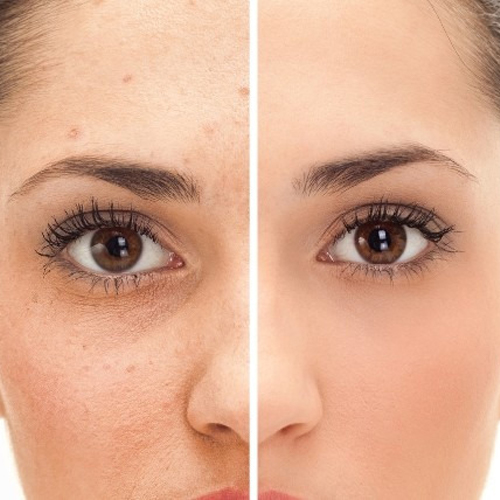Laser resurfacing, specifically using CO2 lasers, is a popular cosmetic procedure aimed at improving skin texture and appearance by removing the outer layers of damaged skin. This guide will provide an in-depth look at how CO2 laser resurfacing works, its benefits, potential risks, and what to expect before, during, and after the treatment.
What is CO2 Laser Resurfacing?
CO2 laser resurfacing uses a carbon dioxide laser to emit short pulses of high-energy light. This light precisely removes thin layers of skin with minimal heat damage to surrounding structures, promoting collagen production and new skin growth.
How CO2 Laser Resurfacing Works
- Laser Emission: The CO2 laser emits light that is absorbed by water in the skin cells.
- Ablation: The absorbed light vaporizes the outer damaged layers of skin.
- Collagen Stimulation: The heat from the laser also stimulates collagen production, improving skin texture and firmness.
Benefits of CO2 Laser Resurfacing
- Skin Rejuvenation: Reduces wrinkles, fine lines, and age spots, leading to smoother, younger-looking skin.
- Improves Texture: Treats acne scars, sun damage, and other skin imperfections.
- Collagen Production: Stimulates collagen production for firmer, more elastic skin.
- Precise Treatment: Can be precisely controlled, making it suitable for delicate areas like around the eyes and mouth.
- Long-Lasting Results: Offers significant and lasting improvements in skin appearance.
Conditions Treated by CO2 Laser Resurfacing
- Fine lines and wrinkles
- Sun damage and age spots
- Acne scars and other scars
- Uneven skin texture and tone
- Enlarged oil glands (sebaceous hyperplasia)
- Warts and other skin growths
The CO2 Laser Resurfacing Process
-
Consultation
- Assessment: A dermatologist or licensed practitioner will assess your skin type, concerns, and medical history.
- Discussion: You will discuss your goals, potential risks, and the expected outcomes of the procedure.
-
Before the Procedure
- Pre-Treatment Care: You may be advised to avoid sun exposure, discontinue certain medications, and use specific skincare products to prepare your skin.
- Anesthesia: Depending on the treatment area and depth, a topical anesthetic, local anesthesia, or sedation may be used to ensure comfort.
-
During the Procedure
- Laser Application: The practitioner will use the CO2 laser to carefully remove the outer layers of skin. The duration of the procedure varies depending on the size and condition of the treatment area.
- Cooling Measures: Cooling devices or cold air may be used to minimize discomfort during the treatment.
-
After the Procedure
- Initial Recovery: The treated area will be red, swollen, and may feel like a sunburn. This typically subsides within a few days to a week.
- Wound Care: You will need to keep the area clean, apply prescribed ointments, and avoid picking at the skin to prevent infection and promote healing.
Post-Treatment Care
-
Skin Protection
- Sun Avoidance: Avoid direct sun exposure and use broad-spectrum sunscreen with at least SPF 30 to protect the healing skin.
- Moisturizing: Keep the skin well-moisturized to aid in the healing process.
-
Managing Side Effects
- Redness and Swelling: Redness may persist for several weeks, and swelling can be managed with cold compresses and anti-inflammatory medications.
- Peeling and Flaking: The treated skin will peel and flake off, revealing new, healthier skin beneath.
-
Follow-Up Appointments
- Monitoring: Regular follow-up appointments with your practitioner are crucial to monitor healing and address any concerns.
- Additional Treatments: Depending on the extent of skin damage and desired results, additional sessions may be recommended.
Potential Risks and Side Effects
- Infection: Proper wound care is essential to prevent bacterial, viral, or fungal infections.
- Hyperpigmentation: Temporary darkening of the skin can occur, especially in individuals with darker skin tones.
- Scarring: Although rare, improper technique or post-treatment care can lead to scarring.
- Prolonged Redness: Redness can persist longer in some individuals, particularly those with sensitive skin.
Choosing a Qualified Provider
- Certification and Experience: Ensure the provider is certified and experienced in performing CO2 laser resurfacing.
- Reputable Clinic: Choose a reputable clinic with positive reviews and modern equipment.
- Consultation: Schedule a consultation to discuss your goals, skin type, and any concerns you may have.


